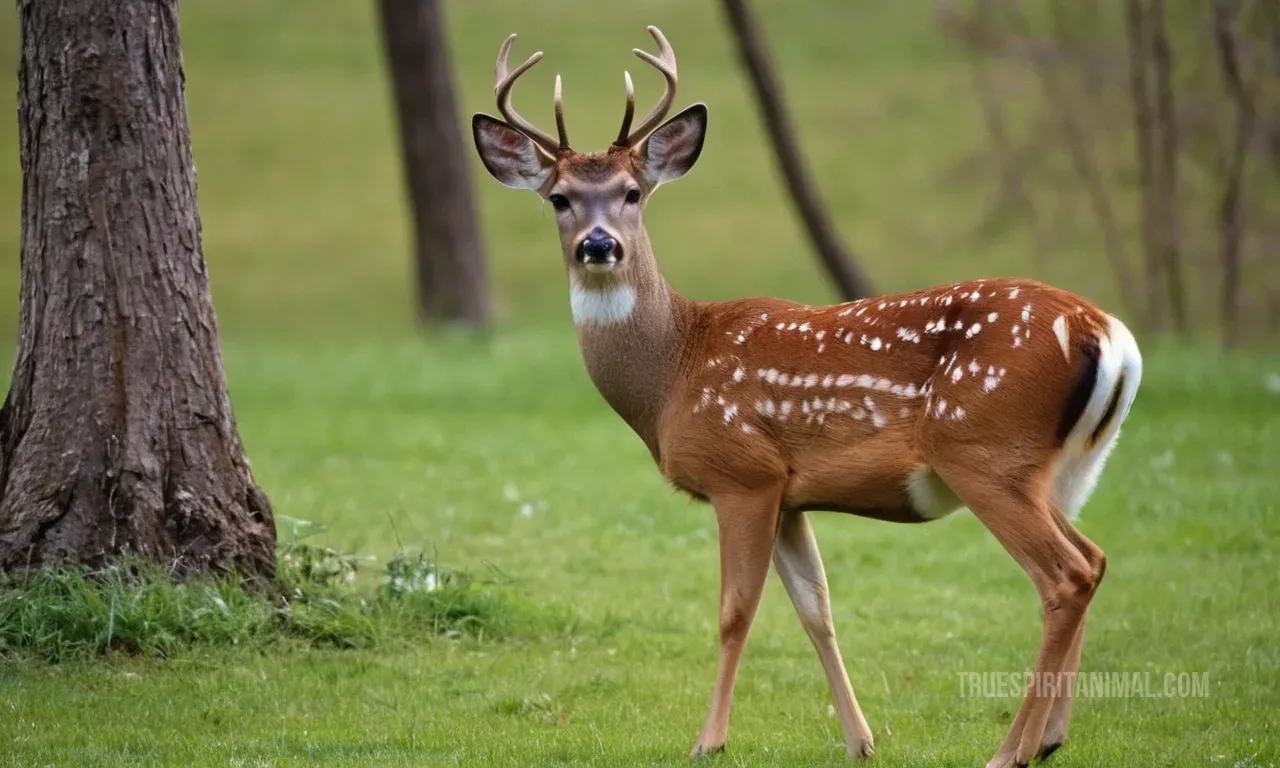Key Deer Symbolism and Meaning

The Key Deer, also known as Odocoileus Virginianus Clavium, is a unique subspecies of the white-tailed deer found only in the Florida Keys. These small, endangered animals are not just known for their diminutive size but are also steeped in symbolism and meaning that resonates with both locals and ecotourists alike. This article aims to explore the significance of the Key Deer and how it has become a symbol of resilience, protection, and conservation efforts in the region.
Introduction:
The Key Deer, native to the Florida Keys, is more than just a cute, small deer found on the islands. It represents a unique blend of natural beauty, history, and cultural heritage. They’ve become emblematic of the fight for survival against all odds, resilience in the face of environmental challenges, and a testament to human efforts towards conservation.
The Symbolism:
- Resilience: With just 600 to 900 members left in the wild, Key Deer are a symbol of adaptation and survival. Despite their dwindling numbers due to habitat destruction, predators, and vehicular accidents, they continue to thrive against all odds. They’ve become a symbol of strength and endurance in the face of adversity.
- Hope: The Key Deer Refuge is an example of community commitment towards conservation efforts. It’s a testament to human intervention ensuring the preservation of this species.
- Local Pride: Locals cherish these deer, associating them with their island heritage and identity. They’re a source of pride for Floridians who celebrate their existence through art, tourism, and literature.
- Environmental Awareness: The Key Deer is a beacon to educate people about ecological protection.
Size:
The Key Deer stands out due to its unique size. At 2 to 3 feet tall at the shoulder, it’s one of the smallest deer species globally, weighing around 45-70 pounds. This small stature makes them a symbol of innocence and vulnerability.
Habitat:
Key Deer thrive in the mangrove swamps and coastal islands of the Florida Keys. They’re an indicator species reflecting the health of their habitat, representing ecological balance and survival against human encroachment.
The Key Deer Refuge:
The refuge is a monument to the community’s dedication towards conservation. It houses efforts for deer breeding, research, education, and rehabilitation programs, showcasing mankind’s ability to protect wildlife.
- Conservation: The National Key Deer Refuge in Big Pine Key is a beacon of hope, illustrating mankind’s potential to preserve nature against threats.
- Education: It serves as an outdoor classroom where students learn about the ecosystem and environmental conservation.
- Tourism: It attracts ecotourists and wildlife enthusiasts for its deer viewing tours and hiking trails.
Cultural Significance:
- Local Art: The Key Deer adorns paintings, sculptures, and posters, signifying local pride and identity.
- Literature: They’re featured in books, poems, and stories, reflecting their cultural importance to the people of the Florida Keys.
- Legendary Status: Folklores and myths revolve around these deer, adding to their mystique and symbolism.
Key Deer in Literature:
Their presence permeates through novels and poetry, reflecting their deep cultural roots. Ernest Hemingway even wrote about them in his book “Islands in the Stream” as ‘the smallest deer in the world’.
- Symbols of Survival: The Key Deer’s limited population tells a story of survival amidst human intervention and environmental challenges, teaching us valuable lessons in ecology.
- Resilience in the Face of Challenges: Despite threats like predators and human encroachment, they’ve persisted with few left, symbolizing resilience.
Endangered but Not Extinct:
The US Fish and Wildlife Service categorizes them as ‘endangered’, yet their survival shows their adaptability and tenacity.
- Endangered but not Extinct: Their presence in museums, zoos, and wildlife sanctuaries represents captive breeding efforts for conservation.
- Cultural Icons: They’re part of local lore and legends, deeply ingrained in the Florida Keys’ culture.
The Artistic Connection:
Key Deer’s image is seen on t-shirts, magnets, postcards – symbolizing island life, wildlife appreciation, and environmental consciousness.
Conclusion:
The Key Deer isn’t just an animal species; it’s a symbol of environmental protection. Its survival amidst adversity mirrors resilience and adaptability. The refuge showcases our ability to protect nature while drawing tourists who learn about ecology. Their presence in literature and art demonstrates their cultural significance. Despite being endangered, they inspire conservation efforts and symbolize hope. They represent the delicate balance between humans and wildlife with their existence in museums and zoos, illustrating our responsibility towards preserving biodiversity.





